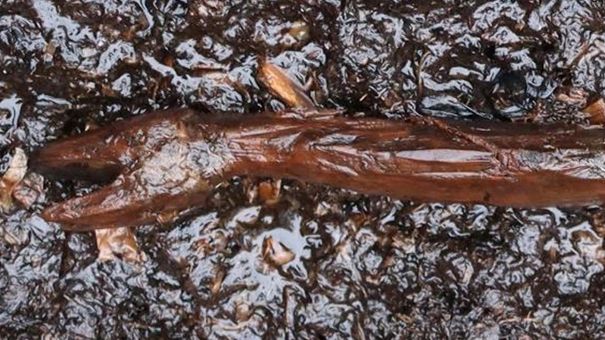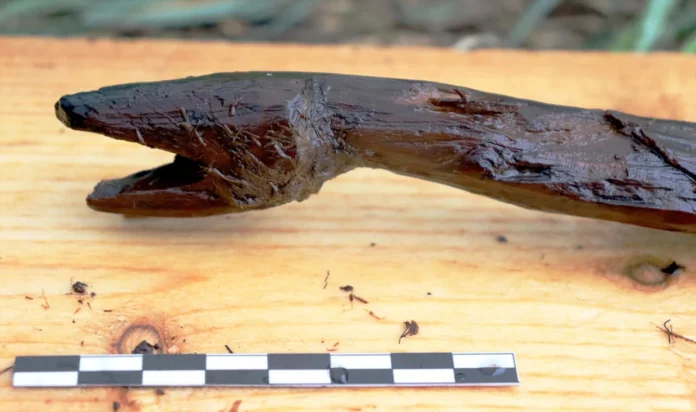In a remarkable archaeological discovery, a 4,400-year-old wooden staff carved to resemble a snake has been unearthed in a wetland in southwest Finland. This ancient artifact, revealed in a recent publication in the journal Antiquity, offers a rare glimpse into Neolithic spiritual practices and underscores the pressing threat to such invaluable finds due to environmental degradation.
Discovery of the Shaman’s Staff

The site where the staff was discovered, known as Järvensuo 1, has been a point of historical interest since the 1950s, when ditch diggers first stumbled upon it. However, it was not until recent excavations that the site was thoroughly examined. Satu Koivisto, the lead researcher from the University of Turku, noted that the staff represents an “astonishingly well-preserved piece of zoomorphic art” from the Neolithic era. According to Koivisto, the staff was either “lost, discarded, or intentionally deposited amidst the thick lakeshore vegetation.”
Characteristics of the Artifact

The wooden staff, which is life-sized and carved from a single piece of wood, features an open mouth and simple features that suggest it is meant to depict a slithering snake, likely a grass snake or a European adder. Its design is indicative of its role in spiritual or religious practices. The staff’s exceptional preservation is attributed to the wetland’s low oxygen levels and high humidity, which have prevented the usual degradation of organic materials.
Cultural and Spiritual Significance

In Neolithic Europe, particularly in northern regions such as Finland, snakes held a special place in spiritual and ritualistic contexts. Similar motifs can be seen in Neolithic rock art, where snakes are often depicted in association with human figures, possibly as part of ceremonial practices. According to Antti Lahelma, an archaeologist at the University of Helsinki and co-author of the Antiquity paper, snakes were viewed as spirit-helper animals for shamans.
The shaman’s staff likely played a role in religious ceremonies, potentially including communication with the dead. The ancient Finnish belief in a “Land of the Dead,” which was associated with wetlands, underscores the staff’s possible use in rituals aimed at bridging the mortal and spiritual worlds. Additionally, shamans were believed to have the ability to transform into snakes, further linking the staff to the mystical realm.
Threats to the Archaeological Heritage

The discovery of the shaman’s staff highlights not only the rich cultural heritage of the Järvensuo wetland but also the urgent need to protect such sites. Koivisto emphasized that Järvensuo, like many other wetlands, is under significant threat from climate change and drainage activities. The delicate organic materials found in these wetlands are particularly vulnerable to these environmental changes.
Koivisto warns that the global climate crisis poses a serious risk to these irreplaceable cultural assets. “Organic treasures are no longer safe,” she stated, urging for immediate action to safeguard these artifacts before they are lost forever. The preservation of such archaeological sites is crucial for maintaining our understanding of ancient cultures and their spiritual practices.
Conclusion
The discovery of the 4,400-year-old shaman’s snake staff in the Finnish wetland is a significant archaeological find that enriches our understanding of Neolithic spirituality and artistry. As we uncover these ancient treasures, we must also acknowledge the pressing threats posed by climate change and environmental degradation. Protecting these invaluable sites is not only an archaeological imperative but also a cultural necessity, ensuring that future generations can continue to explore and appreciate our shared human heritage.
